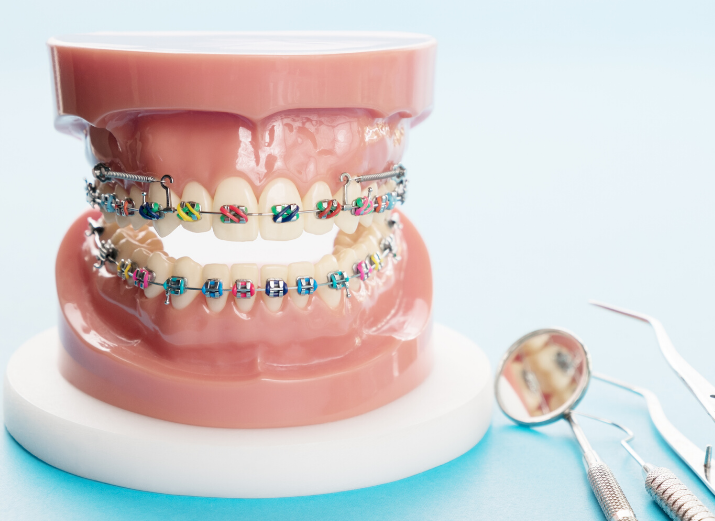Braces are an orthodontic treatment used to correct the position of teeth and improve the patient’s occlusion (bite).

Traditional Braces

Traditional or conventional braces conventional braces consist of two parts: a series of either metal or clear brackets that are attached to each tooth, and an arch wire that runs through slots in the brackets. When tensioned, the wire slowly moves the teeth into the desired position.

Clear Braces

Clear braces, also known as ceramic or porcelain braces, are made from a ceramic material to match your surrounding tooth colour. Just like traditional braces, the clear brackets are attached to each tooth with a clear arch wire that runs through the slots in the bracket to guide teeth into their new positions when tightened.
Clear braces work just as well as traditional metal braces but are more aesthetically pleasing. They are practically invisible from 2 to 3 metres away.
The main advantages of orthodontic braces over Invisalign™ are they are able to move the teeth in more directions, they work more quickly and they are generally more affordable. Because Invisalign retainers can be removed, there is the chance they might be misplaced, whereas this is not an issue with braces as they are fixed in place.
Are braces suitable for you?
Orthodontic braces are a solution to straighten the teeth and bite.
Braces are most suitable where overall oral health is good; otherwise the teeth and gums may require separate treatments first.
Braces are ideal in complex cases where Invisalign may not be able to achieve the desired outcomes, and they are also a more affordable option. Because they are very conservative – that is, they preserve the natural teeth – braces are a great choice for kids.
There are some drawbacks that can make braces unsuitable. Some people find them unsightly; the brackets and wires may be uncomfortable; and the braces cannot be removed, making for a complicated hygiene routine (brushing and flossing) and even restricting what foods can be eaten.
Lingual braces, which are attached to the inside of the teeth, can overcome many of the potential problems mentioned above, although they are significantly more expensive than braces fixed to the outside of the teeth.
What’s the procedure for treatment?
As a general rule, you would attend for adjustments every six to eight weeks during the treatment process, although this frequency will increase later on as fine corrections are made.

